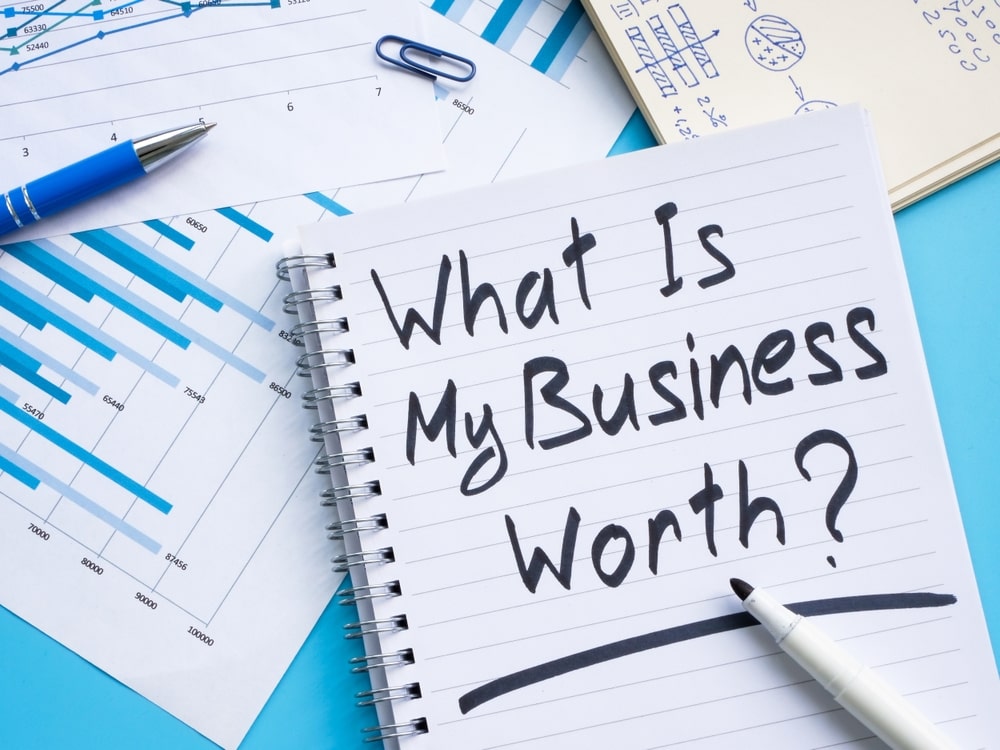When it comes to buying and selling companies, one critical question many grapple with is: “What is the fair market value of the business?” While there are various methods to answer this question, one frequently used approach is the time-revenue method. This technique provides a straightforward and quick way to estimate the worth of a company by looking at its revenue figures.
In this article, we’ll explore how to value a business based on revenue, evaluate the pros and cons of this method, and equip you with the knowledge you need to make informed decisions.
Key Takeaways
- The times-revenue method is an approach used to value a business based on revenue and a revenue multiple.
- The revenue multiple can vary based on the industry, market conditions, and unique characteristics of your business.
- While the times-revenue method is a convenient approach, it doesn’t tell the whole story and may lead to over or under-estimated value of your business.
Table of Contents
What is the Times-Revenue Method?
The times-revenue method, often referred to as the “revenue multiple” or
“price-to-sales ratio” is a widely used approach for valuing businesses. It relies on a simple premise: You can estimate the value of a company by multiplying its annual revenue by a specific factor, known as the revenue multiple. In essence, this method calculates the value of a business based on its ability to generate income. Here’s the formula:
Business Value = Revenue x Revenue Multiple
The times-revenue method offers several advantages, including its simplicity and the focus on a fundamental financial metric—revenue. It’s particularly useful for businesses with consistent revenue patterns, making it valuable for quick estimations.
Examples of the Times-Revenue Method
To help you understand the times-revenue method, here are some practical examples:
Example 1: Determining Business Value
Suppose you’re assessing how much a software development business is worth with $1 million in sales. To determine this using the times-revenue method, you’ll need to consider the revenue multiple applicable to companies in the software industry.
Let’s say, based on market research and comparable company analysis, you find that the typical revenue multiple for software businesses is 3. In this case, you would calculate the business’s value as follows:
Business Value = $1,000,000 (Revenue) x 3 (Revenue Multiple) = $3,000,000
So, using the times-revenue method, the estimated value of this software development company is $3 million.
Example 2: Evaluating a Retail Store
Let’s explore a different scenario. Imagine you’re tasked with valuing a retail store that generates $1 million in sales. After research, you find that the typical revenue multiple of retail businesses is 5x. Applying the times-revenue in this case:
Business Value = $1,000,000 (Revenue) x 5 (Revenue Multiple) = $5,000,000
This means that the estimated value of the retail store is $5 million. Buyers and sellers alike can use this information to help move forward in a transaction.
[selling a business ebook shortcode]
What Factors Influence Multiples?
As demonstrated in the above examples, the revenue multiple varies across industries, markets, and the specific circumstances of a business. Typically, it’s derived from analyzing comparable businesses in the same industry. By examining the financial performance of similar companies, you can determine an appropriate multiple that reflects the market’s perception of how much investors are willing to pay for each dollar of revenue. Generally:
- A higher revenue multiple implies a greater valuation, as it indicates that investors are willing to pay a premium for each dollar of the business’s revenue.
- A lower multiple suggests a lower valuation, which may be due to factors like higher risk or lower growth potential.
Besides the industry and market conditions, other factors that can influence multiples include:
- Company size: Smaller businesses typically have lower multiples because they often carry higher risk factors, making investors more cautious and conservative in their valuations.
- Financial performance: Companies with strong financials, high profitability, and consistent revenue growth tend to receive higher revenue multiples.
- Competitive advantage: Businesses with a unique market position, strong brand recognition, and a competitive edge are often granted higher multiples due to reduced risk and growth prospects.
15 Largest Mergers and Acquisitions in History
Limitations of the Times-Revenue Method
While the times-revenue method offers a straightforward and quick way to estimate the value of a business, it’s not without its limitations. These include:
1. Simplification
The times-revenue method oversimplifies the valuation process by relying solely on revenue as a singular metric. It disregards other critical financial indicators, like profit margins, expenses, and cash flow, which provide a more comprehensive view of a company’s financial health.
2. Inaccuracies for Unprofitable Businesses
For businesses with low or negative profit margins, the times-revenue method can lead to inflated values. In these cases, the method may overestimate the business’s worth.
3. Failure to Capture Profitability
This method doesn’t consider a company’s profitability, which is a fundamental factor in business value. A business with high revenue but low profitability may appear overvalued when using this method.
4. Market Fluctuations
The revenue multiple is sensitive to market fluctuations and investor sentiment. Economic downturns or changes in market conditions can significantly affect the multiple, leading to misleading valuations.
Why Revenue Doesn’t Tell the Whole Story
As mentioned above, the times-revenue method provides a quick and accessible way to estimate a business’s value. However, because it fixates on revenue as the sole determinant of a company’s worth, it fails to capture the bigger picture. Here’s why:
- Profitability matters: A business can have substantial revenue but subpar profits or even losses due to high operational costs or other factors. A purely revenue-based valuation can lead to overvaluing unprofitable businesses.
- Quality of revenue streams: Not all revenue is equal. Some businesses may rely on a few key clients, contracts, or products for most of their revenue. This concentration can pose significant risks. A comprehensive valuation should account for the diversity and stability of revenue sources.
- Costs and expenses: Revenue doesn’t reflect the efficiency or sustainability of a business’s operations. High expenses or overhead costs can eat into revenue, affecting the company long-term.
- Growth prospects: While revenue provides historical context, it doesn’t necessarily indicate a company’s future potential. High revenue growth can make a business appear attractive, but it’s essential to assess the sustainability of that growth.
How Can a Business Increase Its Times Multiple?
Increasing your business’s revenue multiple can result in a higher valuation. If you’re an entrepreneur wondering how to achieve this, focus on improving critical aspects of your company, such as profitability, growth potential, and risk reduction. Strong financial performance, a diversified customer base, and a solid market position can also contribute to a higher multiple.
Additionally, enhancing your company’s competitive advantage, building a solid brand reputation, and demonstrating a consistent track record of success can help attract investors willing to pay more, ultimately boosting your business’s value.
In Summary
The times-revenue method is a simple way to estimate the value of a business, but it’s essential to keep in mind that it doesn’t paint the whole picture. To ensure your company gets an accurate valuation, speak with professionals like ours at Sunbelt Canada. If you’re thinking about buying or selling, our experts know the ins and outs of business valuations and can help you get the most out of the process. Contact us today.




